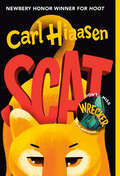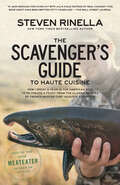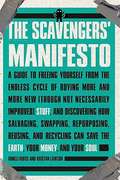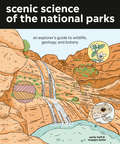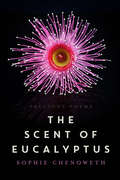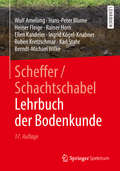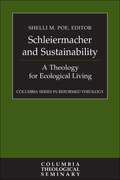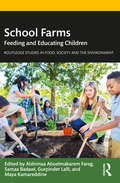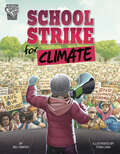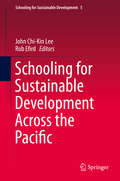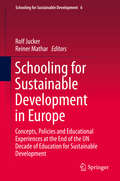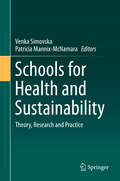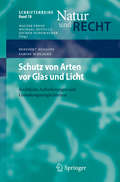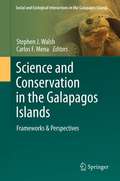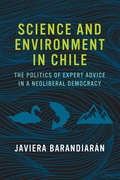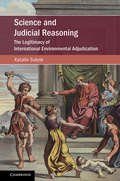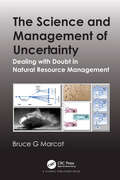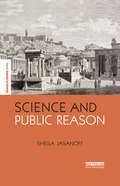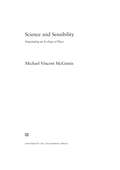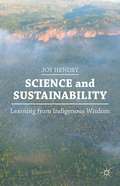- Table View
- List View
Scat
by Carl Hiaasen<P>Bestselling author and columnist Carl Hiaasen returns with another hysterical mystery for kids set in Florida's Everglades. <P>Bunny Starch, the most feared biology teacher ever, is missing. She disappeared after a school field trip to Black Vine Swamp. And, to be honest, the kids in her class are relieved. <P>But when the principal tries to tell the students that Mrs. Starch has been called away on a "family emergency," Nick and Marta just don't buy it. No, they figure the class delinquent, Smoke, has something to do with her disappearance. And he does! But not in the way they think. <P>There's a lot more going on in Black Vine Swamp than any one player in this twisted tale can see. And Nick and Marta will have to reckon with an eccentric eco-avenger, a stuffed rat named Chelsea, a wannabe Texas oilman, a singing substitute teacher, and a ticked-off Florida panther before they really begin to see the big picture. <P>That's life in the swamp, kids.
The Scavenger's Guide to Haute Cuisine: How I Spent a Year in the American Wild to Re-create a Feast from the Classic Recipes of French Master Chef Auguste Escoffier
by Steven RinellaWhen outdoorsman, avid hunter, and nature writer Steven Rinella stumbles upon Auguste Escoffier's 1903 milestone Le Guide Culinaire, he's inspired to assemble an unusual feast: a forty-five-course meal born entirely of Escoffier's esoteric wild game recipes. Over the course of one unforgettable year, he steadily procures his ingredients--fishing for stingrays in Florida, hunting mountain goats in Alaska, flying to Michigan to obtain a fifteen-pound snapping turtle--and encountering one colorful character after another. And as he introduces his vegetarian girlfriend to a huntsman's lifestyle, Rinella must also come to terms with the loss of his lifelong mentor--his father. An absorbing account of one man's relationship with family, friends, food, and the natural world, The Scavenger's Guide to Haute Cuisine is a rollicking tale of the American wild and its spoils. Praise for The Scavenger's Guide to Haute Cuisine "If Jack Kerouac had hung out with Julia Child instead of Neal Cassady, this book might have been written fifty years ago. . . . Steven Rinella brings bohemian flair and flashes of poetic sensibility to his picaresque tale of a man, a cookbook, and the culinary open road."--The Wall Street Journal "If you rue the 'depersonalization of food production,' or you're tired of chemical ingredients, [Rinella] will make you howl."--Los Angeles Times "A walk on the wild side of hunting and gathering, sure to repel a few professional food sissies but attract many more with its sheer in-your-face energy and fine storytelling."--Jim Harrison, author of Legends of the Fall "[A] warped, wonderful memoir of cooking and eating . . . [Rinella] recounts these madcap wilderness adventures with delicious verve and charm."--Men's JournalFrom the Trade Paperback edition.
The Scavengers' Manifesto
by Anneli Rufus Kristan LawsonDestined to become the bible for a bold new subculture of eco-minded people who are creating a lifestyle out of recycling, reusing, and repurposing rather than buying new. An exciting new movement is afoot that brings together environmentalists, anticonsumerists, do-it-yourselfers, bargain-hunters, and treasure-seekers of all stripes. You can see it in the enormous popularity of many websites: millions of Americans are breaking free from the want-get-discard cycle by which we are currently producing approximately 245 million tons of waste every day (that's 4. 5 pounds per person, per day!). In The Scavengers' Manifesto, Anneli Rufus and Kristan Lawson invite readers to discover one of the most gratifying (and inexpensive) ways there is to go green. Whether it's refurbishing a discarded wooden door into a dining-room table; finding a bicycle on freecycle. org; or giving a neighbor who just had a baby that cute never-used teddy bear your child didn't bond with, in this book Rufus and Lawson chart the history of scavenging and the world-changing environmental and spiritual implications of "Scavenomics," and offer readers a framework for adopting scavenging as a philosophy and a way of life. .
Scenic Science of the National Parks: An Explorer's Guide to Wildlife, Geology, and Botany
by Emily Hoff Maygen KellerExplore the fascinating science behind the national parks in this charming illustrated guide. The national parks are some of the most beloved, visited, and biodiverse places on Earth. They're also scientific playgrounds where you can learn about plants, animals, and our planet's coolest geological features firsthand. Scenic Science of the National Parks curates and breaks down the compelling and offbeat natural science highlights of each park, from volcanic activity, glaciers, and coral reefs to ancient redwood groves, herds of bison, giant bats, and beyond. Featuring full-color illustrations, information on the history and notable features of each park, and insider tips on how to get the most out of your visit, this delightful book is the perfect addition to any park lover's collection.
Scent: A Natural History of Fragrance
by Elise Vernon PearlstineA fascinating exploration of the natural history of scent and human perceptions of fragrance from the viewpoint of plant and pollinator &“An evocative journey that awakens one&’s curiosity to an oft-forgotten sense.&”—Dana Dunham, Scientific American Plants have long harnessed the chemical characteristics of aromatic compounds to shape the world around them. Frankincense resin from the genus Boswellia seals injured tissues and protects trees from invading pathogens. Jasmine produces a molecule called linalool that attracts pollinating moths with its flowery scent. Tobacco uses a similarly sweet-smelling compound called benzyl acetone to attract pollinators. Only recently in the evolutionary history of plants, however, have humans learned to co-opt their fragrances to seduce, heal, protect, and alter moods themselves. In this wide-ranging and accessible new book, biologist-turned-perfumer Elise Vernon Pearlstine turns our human-centered perception of fragrance on its head and investigates plants' evolutionary reasons for creating aromatic molecules. Delving into themes of spirituality, wealth, power, addiction, royalty, fantasy, and more, Pearlstine uncovers the natural history of aromatic substances and their intersection with human culture and civilization.
The Scent of Eucalyptus: Precious Poems
by Sophie ChenowethThis book is an ode to the fragrant, yet rough-hewn Australian bush. By delving into its pages, you will be transported to a parallel realm where flannel flowers sing, cockatoos choreograph and paperbark trees seduce. A memoir of sorts, this poignant and ethereal collection of poems celebrates the beauty, the harshness and the resilience of this ancient land and its unforgettable inhabitants. In addition, you'll be serenaded by harps and fairies, meander through time in a yellow dinghy and stand in quiet awe as a ballerina beguiles. Refreshingly honest, this waltz down memory lane is intensely emotional but has a lightness that will soothe even on the blusteriest of days. Illustrated with sensitively taken photographs, it is a keepsake you will cherish for many years to come.
Scheffer/Schachtschabel Lehrbuch der Bodenkunde: Lehrbuch Der Bodenkunde
by Berndt-Michael Wilke Karl Stahr Ruben Kretzschmar Ingrid Kögel-Knabner Ellen Kandeler Rainer Horn Heiner Fleige Hans-Peter Blume Wulf AmelungDie 17. Auflage dieses renommierten Lehrbuches vermittelt ein umfassendes Wissen über Böden und deren Schutz. Böden bilden eine der wichtigsten Grundlagen für das terrestrische Leben. Für einen effektiven Schutz und Erhalt dieses Lebensraums braucht es ein grundlegendes Verständnis der Prozesse, die Böden formen, sowie der Eigenschaften der Böden selbst. Dieses Buch fasst den neusten Kenntnisstand der Forschung zusammen und vermittelt ein umfassendes Wissen der Bodenkunde. Im Detail werden behandelt: die Vorgänge der Bodenbildung und -entwicklung,die physikalischen, chemischen und biologischen Eigenschaften und Prozesse, Nähr- und Schadstoffe,die verschiedenen Bodensystematiken, die wichtigsten Böden und Bodenlandschaften,die Nutzungsbewertung der Böden, Grundsätze des Bodenschutzes. Die 17. Auflage wurde überarbeitet und ergänzt. Neu ist ein Kapitel zu Nanopartikeln als Schadstoffe im Boden. Durch seine Ausführlichkeit ist dieses Buch ein Must-Have für alle, die sich mit Böden befassen.
Schleiermacher and Sustainability: A Theology For Ecological Living
by Shelli PoeSince the 1960s, theologians have been involved in efforts to guide Christians to reflection and action in light of planetary peril. The contributors to this volume illustrate how Friedrich Schleiermacher's theological work could fulfill that need. Schleiermacher's theology, they contend, finds its culmination in Christian social action and is remarkably conducive to ecological thinking in the modern world. <P><P> Each chapter deals with a particular locus in Schleiermacher's systematic theology, focusing on its implications for sustainable living. In so doing, Schleiermacher and Sustainability offers a sophisticated account of Schleiermacher's thought that will upend many estimations of his value for current constructive theology and provide a potent resource for those seeking to integrate ecological living into the marrow of their daily existence.
School Farms: Feeding and Educating Children (Routledge Studies in Food, Society and the Environment)
by Alshimaa Aboelmakarem Farag, Samaa Badawi, Gurpinder Lalli, and Maya KamareddineThis book highlights the potential of school farms to fight hunger and malnutrition by providing access to locally produced, fresh, and healthy food as well as providing young students with educational opportunities to learn, interact with nature, and develop their skills. Hunger is one of the most pressing concerns we face today and there is a clear need to provide alternative sources of food to feed a fast-growing population. School farms offer a sustainable opportunity to produce food locally in order to feed underprivileged students who rely on school meals as an integral part of their daily diet. Approaching the concept of school farms through four themes, Problem, People, Process, and Place, the book shows how they can play an essential role in providing sustainable and healthy food for students, the critical role educational institutions can play in promoting this process, and the positive impact hands-on farming can have on students' mental and physical wellbeing. Utilizing the authors' personal hands-on experiences, and drawing on global case studies, the book provides a theoretical framework and practical guidance to help with the establishment of school farms and community-based gardening projects and an education system which promotes a sustainable and healthy approach to food, agriculture, and the environment. This book will be essential reading for students and scholars of food security, agriculture, healthy and sustainable diets, education for sustainable development, and urban studies. It will also be of great interest to practitioners and policymakers involved in food policy, developing school and community projects, global health and international development, as well as education professionals.
School Strike for Climate (Movements and Resistance)
by Nel YomtovIn August 2018, a teenager named Greta Thunberg missed school to sit outside the Swedish parliament with a sign that read School Strike for Climate. She was demanding that government leaders take stronger action against climate change due to global warming. At first, Greta sat alone. But her message spread. Other students joined her in the movement that became known as Fridays for Future. By September 2019, millions of activists from around the world marched in protests to protect the future of the planet.
Schooling for Sustainable Development Across the Pacific
by John Chi-Kin Lee Rob EfirdEnvironmental education (EE) and education for sustainable development (ESD) are asserting their growing role in curricula around the world, yet how deeply embedded are they in the learning systems of the Pacific nations? Building on an earlier analysis in China and Taiwan, this volume expands its purview to examine the quality and extent of environmental and sustainable development education in a number of countries in the Asia-Pacific region, including China itself, Taiwan, South Korea, Japan and Indonesia As well as offering detailed national analyses provided by Asian-Pacific academics and professionals, this work includes examples in the US and Canada and an introduction that assesses the contrasting challenges and positive commonalities among diverse education systems. The chapters reflect leading-edge practice, innovation, and depth of experience and at the same time as detailing locally relevant and culturally appropriate strategies they also provide clear models and strategies for expanding the application and influence of education for sustainable development elsewhere. In doing so, they mirror the global nature of environmental issues as well as the local nature of the solutions.
Schooling for Sustainable Development in Europe
by Rolf Jucker Reiner MatharThis book examines the implementation of Education for Sustainable Development (ESD) programs in schools across Europe. It describes and analyzes how individual countries and the region as a whole have established teaching and learning methods to help students develop the competencies needed to be part of a sustainable society. Featuring chapters written by experts throughout Europe, the book first provides a general overview of ESD in various contexts, including the state-of-the-art of ESD theory and conceptual development; political and social analysis; the various concepts of ESD competencies; and teacher training. Next, the book details how ESD has been implemented in different European countries and regions, including: Sweden, Italy, Germany, Austria, Switzerland, Catalonia, Hungary, Finland, Norway, Denmark, Flanders, France, Cyprus, UK and the Netherlands. In recognition of education as a motor of change, the United Nations General Assembly declared a Decade of Education for Sustainable Development (2005-2014), calling for the integration of sustainable development into all aspects of education and learning. Inside this book, readers will find details on what has been done, as well as assessments of what more could be done, across Europe. It will help readers gain valuable insights into how to help students develop the knowledge, skills and values needed to shape a sustainable future.
Schools for Health and Sustainability
by Venka Simovska Patricia Mannix McnamaraSchools are unique places. They pay a central role in the formation of young people. The importance of how young people are educated and how they are encouraged to live and learn cannot be underestimated. This book advocates for the fostering of agency not only amongst school personnel but also amongst younger generations for health and sustainability. It provides the reader with a new lens with which to discover health promoting schools and education for sustainable development. It invites the reader to look more deeply into both and to accompany the authors on a journey of discovery of the real potential for each to enhance the practice of schooling.
Schutz Kritischer Infrastrukturen in Deutschland: Implementation zum Infrastrukturschutz an Verkehrsflughäfen
by Eva K. PlatzerDer Schutz von kritischen Infrastrukturen spielt eine entscheidende Rolle bei der Aufrechterhaltung täglicher Dienstleistungen und schützt sowohl die Bevölkerung als auch die nationale Wirtschaft eines Landes. Bisher ist die Policy zum Schutz Kritischer Infrastrukturen freiwillig. Ihre Implementation hängt vom Betreiber der Kritischen Infrastruktur ab. Im Zuge der Corona-Pandemie wurden Maßnahmen ergriffen, die zu Veränderungen der Policy-Inhalte geführt haben. Zudem führt das (aktuell im Entwurf befindliche) KRITIS-Dachgesetz zu einer grundlegenden Novellierung der Policy. Dies macht eine eingehende Analyse des Status quo der Implementation durch die Betreiber erforderlich. Die qualitative Untersuchung dieser Arbeit vergleicht anhand von drei Fallstudien die Umsetzung der Policy zum Schutz Kritischer Infrastrukturen an deutschen Verkehrsflughäfen. Die Kernfragen sind dabei: Wie wird die Policy implementiert und wie lässt sich dies erklären?
Schutz von Arten vor Glas und Licht: Rechtliche Anforderungen und Gestaltungsmöglichkeiten (Schriftenreihe Natur und Recht)
by Benedikt Huggins Sabine SchlackeDieses Buch enthält eine umfassende Analyse der rechtlichen Pflichten und Gestaltungsmöglichkeiten zum Schutz vor Risiken und Gefahren für Vögel, Fledermäuse und Insekten durch Glas und Licht. Die Anlockwirkung von nächtlichen Lichtquellen auf Insekten sowie die Kollisionen von Vögeln mit Glas sind allgemein bekannt, aber bislang kaum untersucht worden. Aufgrund neuer Forschungserkenntnisse rückt die Verwendung von Glas und Licht nun stärker in den Fokus des Interesses. Diese rechtstatsächlichen Erkenntnisse werden zusammengefasst und erstmals einer umfassenden systematischen Analyse unterzogen. Das Buch arbeitet die Anforderungen des geltenden Rechts an den Schutz vor Risiken und Gefahren für Vögel, Fledermäuse und Insekten durch Glas und Licht heraus. Im Mittelpunkt steht dabei die Untersuchung der naturschutzrechtlichen Eingriffsregelung, des FFH-Rechts und des besonderen Artenschutzrechts. Das Buch entwickelt Kriterien, anhand derer sich die Erheblichkeit von Beeinträchtigungen von und Eingriffen in Natur und Landschaft bestimmen lassen, und wertet die von der Rechtsprechung zum besonderen Artenschutzrecht entwickelten Signifikanzkriterien für nachteilige Auswirkungen von Glas und Licht aus. Ein weiterer Schwerpunkt sind die baurechtlichen Gestaltungsmöglichkeiten und Vermeidungspflichten der Kommune durch Festsetzungen in Bebauungsplänen. Daneben untersucht das Buch die immissionsschutzrechtlichen Betreiberpflichten zum Schutz vor Lichtanlagen. Im Zusammenhang mit Licht wird der immissionsschutzrechtliche Begriff des Standes der Technik von Vermeidungsmaßnahmen konkretisiert und die Verkehrssicherungspflichten von Kommunen zur Beleuchtung der öffentlichen Straßen und Wege bestimmt. Schließlich wird auch die Vereinbarkeit von Skybeamern mit Bauordnungs- und Naturschutzrecht geprüft.
SCIENCE: Order & Design
by Dawn McKenzieExplore the many wonderful levels of creation with this colorful and beautifully designed book! From taking a look at the things you might find in your backyard to the species that occupy the rainforest, your child will receive a greater understanding of the beautiful world that God has created. Other topics included are healthy living, the miraculous stages of a baby’s development, exploring the animals of the sea, the intricate designs of the plant life, and more! Section reviews are included to support the information that your child has learned in each lesson.
Science and Conservation in the Galapagos Islands
by Stephen J. Walsh Carlos F. MenaIn this launch of the Galapagos series, this book provides a broad "framing" assessment of the current status of social and ecological systems in the Galapagos Islands, and the feedback that explicitly links people to the environment. It also highlights the challenges to conservation imposed by tourism in the Galapagos Islands and the attendant migration of people from mainland Ecuador to service the burgeoning tourism industry. Further, there is an emphasize on the status of the terrestrial and marine environments that form the very foundation of the deep attraction to the Islands by tourists, residents, scholars, and conservationists.
Science and Environment in Chile: The Politics of Expert Advice in a Neoliberal Democracy (Urban and Industrial Environments)
by Javiera BarandiaranThe politics of scientific advice across four environmental conflicts in Chile, when the state acted as a “neutral broker” rather than protecting the common good.In Science and Environment in Chile, Javiera Barandiarán examines the consequences for environmental governance when the state lacks the capacity to produce an authoritative body of knowledge. Focusing on the experience of Chile after it transitioned from dictatorship to democracy, she examines a series of environmental conflicts in which the state tried to act as a “neutral broker” rather than the protector of the common good. She argues that this shift in the role of the state—occurring in other countries as well—is driven in part by the political ideology of neoliberalism, which favors market mechanisms and private initiatives over the actions of state agencies. Chile has not invested in environmental science labs, state agencies with in-house capacities, or an ancillary network of trusted scientific advisers—despite the growing complexity of environmental problems and increasing popular demand for more active environmental stewardship. Unlike a high modernist “empire” state with the scientific and technical capacity to undertake large-scale projects, Chile's model has been that of an “umpire” state that purchases scientific advice from markets.After describing the evolution of Chilean regulatory and scientific institutions during the transition, Barandiarán describes four environmental crises that shook citizens' trust in government: the near-collapse of the farmed salmon industry when an epidemic killed millions of fish; pollution from a paper and pulp mill that killed off or forced out thousands of black-neck swans; a gold mine that threatened three glaciers; and five controversial mega-dams in Patagonia.
Science and Judicial Reasoning: The Legitimacy of International Environmental Adjudication (Cambridge Studies on Environment, Energy and Natural Resources Governance)
by Katalin SulyokScience, which inevitably underlies environmental disputes, poses significant challenges for the scientifically untrained judges who decide such cases. In addition to disrupting ordinary fact-finding and causal inquiry, science can impact the framing of disputes and the standard of review. Judges must therefore adopt various tools to adjust the level of science allowed to enter their deliberations, which may fundamentally impact the legitimacy of their reasoning. While neglecting or replacing scientific authority can erode the convincing nature of judicial reasoning, the same authority, when treated properly, may lend persuasive force to adjudicatory findings, and buttress the legitimacy of judgments. In this work, Katalin Sulyok surveys the environmental case law of seven major jurisdictions and analyzes framing techniques, evidentiary procedures, causal inquiries and standards of review, offering valuable insight into how judges justify their choices between rival scientific claims in a convincing and legitimate manner.
The Science and Management of Uncertainty: Dealing with Doubt in Natural Resource Management
by Bruce G. MarcotUncertainty can take many forms, can be represented in many ways, and can have important implications in decision-making and policy development. This book provides a rigorous scientific framework for dealing with uncertainty in real-world situations, and provides a comprehensive study of concepts, measurements, and applications of uncertainty in ecological modeling and natural resource management. The focus of this book is on the kinds and implications of uncertainty in environmental modeling and management, with practical guidelines and examples for successful modeling and risk analysis in the face of uncertain conditions and incomplete information. Provided is a clear classification of uncertainty; methods for measuring, modeling, and communicating uncertainty; practical guidelines for capturing and representing expert knowledge and judgment; explanations of the role of uncertainty in decision-making; a guideline to avoiding logical fallacies when dealing with uncertainty; and several example cases of real-world ecological modeling and risk analysis to illustrate the concepts and approaches. Case topics provide examples of structured decision-making, statistical modeling, and related topics. A summary provides practical next steps that the reader can take in analyzing and interpreting uncertainty in real-world situations. Also provided is a glossary and a suite of references.
The Science and Politics of Global Climate Change
by Andrew E. Dessler Edward A. ParsonThe second edition of Dessler and Parson's acclaimed book provides an integrated treatment of the science, technology, economics, policy, and politics of climate change. Aimed at the educated non-specialist, and at courses in environmental policy or climate change, the book clearly lays out the scientific foundations of climate change, the issues in current policy debates, and the interactions between science and politics that make the climate change debate so contentious and confusing. This new edition is brought completely up to date to reflect the rapid movement of events related to climate change. In addition, all sections have been improved, in particular a more thorough primer on the basic science of climate change is included. The book also now integrates the discussion of contrarian claims with the discussion of current scientific knowledge; extends the discussion of cost and benefit estimates; and provides an improved glossary.
Science and Public Reason (The Earthscan Science in Society Series)
by Sheila JasanoffThis collection of essays by Sheila Jasanoff explores how democratic governments construct public reason, that is, the forms of evidence and argument used in making state decisions accountable to citizens. The term public reason as used here is not simply a matter of deploying principled arguments that respect the norms of democratic deliberation. Jasanoff investigates what states do in practice when they claim to be reasoning in the public interest. Reason, from this perspective, comprises the institutional practices, discourses, techniques and instruments through which governments claim legitimacy in an era of potentially unbounded risks—physical, political, and moral. Those legitimating efforts, in turn, depend on citizens’ acceptance of the forms of reasoning that governments offer. Included here therefore is an inquiry into the conditions that lead citizens of democratic societies to accept policy justification as being reasonable. These modes of public knowing, or “civic epistemologies,” are integral to the constitution of contemporary political cultures. Methodologically, the book is grounded in the field of Science and Technology Studies (STS). It uses in-depth qualitative studies of legal and political practices to shed light on divergent cross-cultural constructions of public reason and the reasoning political subject. The collection as a whole contributes to democratic theory, legal studies, comparative politics, geography, and ethnographies of modernity, as well as STS.
Science and Risk Regulation in International Law
by Jacqueline PeelThe regulation of risk is a preoccupation of contemporary global society and an increasingly important part of international law in areas ranging from environmental protection to international trade. This book examines a key aspect of international risk regulation - the way in which science and technical expertise are used in reaching decisions about how to assess and manage global risks. An interdisciplinary analysis is employed to illuminate how science has been used in international legal processes and global institutions such as the World Trade Organization. Case studies of risk regulation in international law are drawn from diverse fields including environmental treaty law, international trade law, food safety regulation and standard-setting, biosafety and chemicals regulation. The book also addresses the important question of the most appropriate balance between science and non-scientific inputs in different areas of international risk regulation.
Science and Sensibility: Negotiating an Ecology of Place
by Michael Vincent McginnisIf humans are to understand and discover ways of addressing complex social and ecological problems, we first need to find intimacy with our particular places and communities. Cultivating a relationship to place often includes a negotiating process that involves both science and sensibility. While science is one key part of an adaptive and resilient society, the cultivation of a renewed sense of place and community is essential as well. Science and Sensibility argues for the need for ecology to engage with philosophical values and economic motivations in a political process of negotiation, with the goal of shaping humans' treatment of the natural world. Michael Vincent McGinnis aims to reframe ecology so it might have greater "trans-scientific" awareness of the roles and interactions among multiple stakeholders in socioecological systems, and he also maintains that deep ecological knowledge of specific places will be crucial to supporting a sustainable society. He uses numerous specific case studies from watershed, coastal, and marine habitats to illustrate how place-based ecological negotiation can occur, and how reframing our negotiation process can influence conservation, restoration, and environmental policy in effective ways.
Science and Sustainability
by Joy HendryIndigenous science is often dismissed as quackery or nonsense, out of touch with progress and current events. However, Indigenous peoples have passed down vital information for generations, from which local plants help cure common ailments, to which parts of the land are unsuitable for buildings because of likely earthquakes. These scientific practices that have been developed by Indigenous peoples around the world have been largely ignored by Western colonizers in their lands. From Japan and New Zealand to Australia and Canada, Indigenous science involves environmentally-focused, sustainable practices that allow people to live with the land rather than in spite of it. Here, Hendry examines science through these Indigenous roots, problematizing the idea that Western science is the only type that deserves that name and drawing attention to some of its shortcomings. She takes the reader with her on the learning process and shares a myriad of sustainable examples that can be put into practice.
